Donald Trump inherited 88 district and 17 court of appeals vacancies. Fourteen months later he proclaimed “when I got in we had over 100 federal judges that weren’t appointed. I don’t know why Obama left that … Maybe he got complacent.”
The reasons for the vacancies—old news to most—was the flimsy confirmation record in the 2015-16 Senate (the 114th), with its new Republican majority. Just as it refused to consider Merrick Garland’s Supreme Court nomination, it shut down the lower court confirmation process. That’s water under the bridge. But documenting how the 114th Senate ratcheted up the contentiousness and polarization of an already broken confirmation process suggests how much harder it will be to ratchet it back into something with more comity and bipartisanship. Senate Majority Leader Mitch McConnell now insists that there’s nothing “we can do …that’s more important … than confirming judges as rapidly as we get them.” Commentators boast that “Trump has had a massive impact on the federal bench.” The Republican majority refuses to grant Democratic senators privileges that Republicans and Democrats exploited vigorously in previous administrations.
Senate Democrats in turn are using their reduced arsenal of parliamentary maneuvers to slow down confirmations. If they get a Senate majority in divided government, confirmations will stop, long-term vacancies will proliferate, and sitting judges and litigants will pay the price.
The 114th’s record pales when compared to the final two years of the Reagan, Clinton, and Bush administrations. Then, as in 2015-16, the other party controlled the Senate. The 114th Senate both confirmed far fewer judges than its recent other-party predecessors and stopped confirming them at a much earlier point. Some of the 2016 vacancies Trump inherited occurred after any confirmation clock would have stopped. Still, of the 21 circuit vacancies he’s filled as of late May and others he soon will, up to seven could have had Obama appointees under pre-2015 norms. So too, up to 71 of the district vacancies he inherited and has only begun to fill could have had Obama appointees.
2015-16 confirmations vs. previous final-two-year confirmations
Final two-year court of appeals (CA) confirmations in 2015-16 were eight fewer than in George Bush’s final two years; district confirmations were 40 fewer. Those confirmations were even fewer compared to Clinton’s and Reagan’s. Final two-year confirmations were mostly 20% or more of all eight-year confirmations for Reagan, Clinton, and Bush, but dropped to four and seven percent for Obama.
| Table 1: Final-Two-Year Court of Appeals (CA) and District Confirmations | ||||||
|---|---|---|---|---|---|---|
| Eight Years | Final Two Years | Percent of Total | ||||
| Reagan | CA | 83 | 17 | 20% | ||
| District | 290 | 66 | 23% | |||
| Clinton | CA | 66 | 16 | 24% | ||
| District | 305 | 57 | 19% | |||
| Bush 2 | CA | 60 | 10 | 17% | ||
| District | 261 | 58 | 22% | |||
| Obama | CA | 55 | 2 | 4% | ||
| District | 268 | 18 | 7% | |||
Court of appeals nominees: when they were submitted and when confirmations stopped
The 114th’s two circuit confirmations were renominated 2014 holdovers. None of the seven circuit nominees that Obama submitted in 2015 or 2016 was confirmed. They had been submitted in early 2016 (a few without home-state Republican senator support). In Reagan’s, Clinton’s, and Bush’s final two years, the other-party Senate confirmed circuit nominees that had been submitted in the eighth year as late as June (Reagan), February (Clinton), and April (Bush).
The 114th’s final circuit confirmation was in January 2016. Other-party Senates in previous administrations confirmed circuit nominees in the eighth year as late as October (Reagan), July (Clinton) and June (Bush).
| Table 2: Court of Appeals | ||||
|---|---|---|---|---|
| Latest nomination to be confirmed was submitted in | Date of latest confirmation | |||
| Reagan (1981-88) | June of 8th year | October of 8th year | ||
| Clinton (1993-2000) | February of 8th year | July of 8th year | ||
| Bush (2001-2008) | April of 8th year | June of 8th year | ||
| Obama (2009-2016) | November of 6th year | January of 8th year | ||
Circuit vacancies that Trump inherited: what became of them?
Trump has filled six of the seven circuit vacancies that had Obama nominees. The seventh, a December 2015 California vacancy, remains without a Trump nominee, probably the result of bargaining with ranking Judiciary Committee member Dianne Feinstein.
Trump also filled two other vacancies that date from 2012 and 2013, both in Texas. They went nominee-less under Obama, almost certainly because Texas’s Republican senators used their blue-slip veto threat to thwart any nominations. (Previously, if either-party home-state senators opposed a nominee by not returning the Judiciary committee chair’s blue-paper inquiry about their support, it stopped the nomination. A threat to do so made it pointless even to submit the nominee in question.) Trump circuit nominees are now proceeding to confirmation over home-state senator objections.
District court nominees: when they were submitted and when confirmations stopped
Of the 114th Senate’s 42 unconfirmed district nominees, 19 had been nominated in 2015, the rest in early 2016, no later than April. In each of the final two-year periods for Reagan, Clinton, and Bush, the other-party Senates confirmed nominees who had been submitted as late as July of the eighth year.
Of the 114th’s 18 district confirmations, nine were 2014 holdovers, and nine were 2015 nominees. No 2016 nominees were successful. The last successful nominee might have been a June 2015 submission but for the fact that Senate Judiciary Chairman Charles Grassley of Iowa sped his two 2015 Iowa nominees (from July and September) to comparatively speedy February confirmations. (The median time for the other 16 confirmations was 11 months. Trump’s 17 district appointees have moved to confirmation in a median of six months.)
The 114th Senate confirmed its final district judge in July 2016. Previous other-party Senates were confirming district judges into September and October of the eighth year.
| Table 3: District Courts | ||||
|---|---|---|---|---|
| Latest nomination to be confirmed was submitted in | Date of latest confirmation | |||
| Reagan (1981-88) | July of 8th year | October of 8th year | ||
| Clinton (1993-2000) | July of 8th year | October of 8th year | ||
| Bush (2001-2008) | July of 8th year | September of 8th year | ||
| Obama (2009-2016) | September of 7th year | July of 8th year | ||
District vacancies Trump inherited: what became of them?
Trump inherited 71 district vacancies, not including those created after July 2016. Under previous norms, the 114th Senate would have confirmed a good many of Obama’s 42 unconfirmed pre-May 2016 nominees. Trump has submitted 30 nominees for those 42 vacancies, nine of whom have been confirmed. Four of his nominees to nominee-less vacancies under Obama have also been confirmed, as have four nominees to vacancies occurring in late 2016 or beyond.
Trump renominated 11 unsuccessful Obama nominees, most the result of White House bargaining with home-state Republicans. So, the 114th’s Senate’s slow-walking won’t have kept them from eventual confirmation, but it extended the vacancy periods by one or more years, with attendant strain on sitting judges and litigants.
Were Obama’s unconfirmed nominees less qualified?
No, based on the average American Bar Association ratings (awarding 4 to “well-qualified” rankings, 3 to mixed “well-qualified/qualified, 2 to “qualified” and 1 to mixed “qualified/not qualified” or “not qualified”) The average for his 18 confirmed district nominees was 3.1 and 3.3 for his unsuccessful district nominees. His two successful and seven unsuccessful circuit nominees had an average rating of 3.0. Of Trump nominees, confirmed and pending, whom the ABA had ranked by May 25, district nominees had an average rank of 2.9, his circuit nominees 3.3. The comparisons aren’t precise because the ABA ranked Obama’s nominees before they became public, but ranked Trump’s after nomination, perhaps encouraging some interviewees to be less than candid.
Final observation
The 114th Senate contributed to the contentiousness and polarization of the once semi-ministerial task of confirming judge. There is no reason to expect the process to get any better. We are reaching the point that confirmations stop unless the same party controls the White House and Senate.
The Brookings Institution is committed to quality, independence, and impact.
We are supported by a diverse array of funders. In line with our values and policies, each Brookings publication represents the sole views of its author(s).
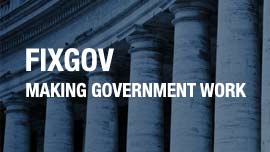
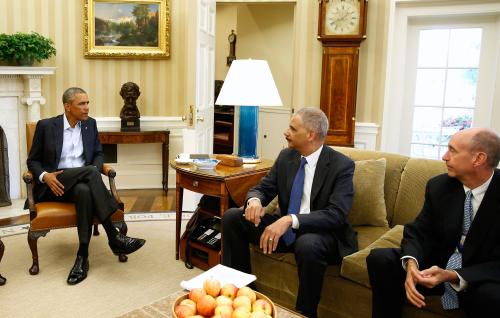
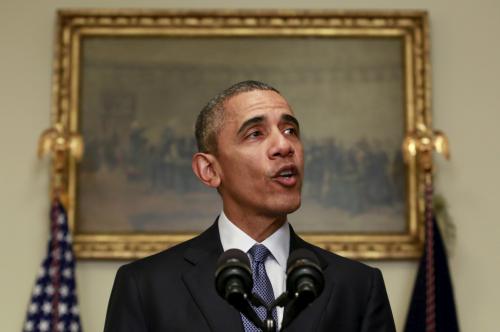
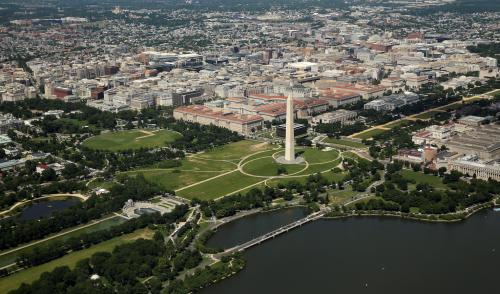
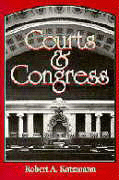
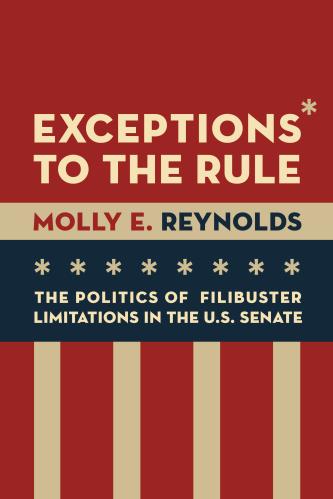
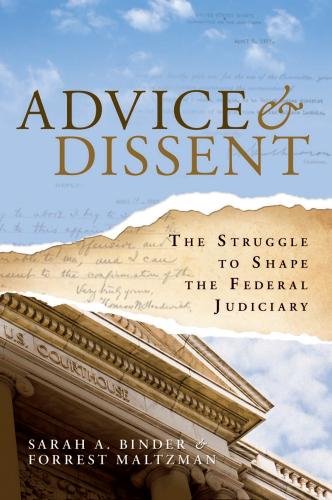
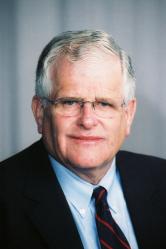
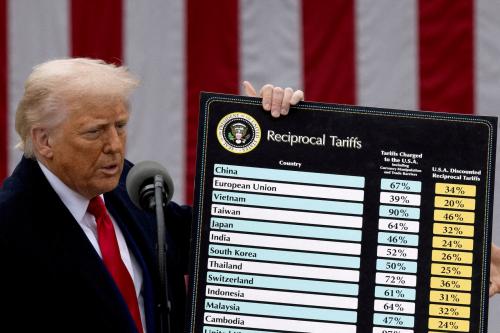


Commentary
Senate obstructionism handed a raft of judicial vacancies to Trump—what has he done with them?
June 4, 2018